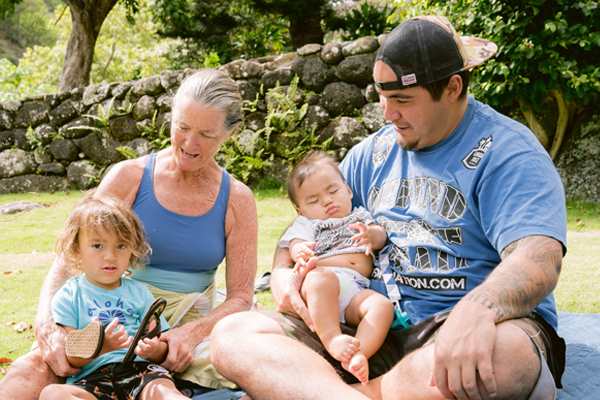More Hawaiʻi Families at a Tipping Point
A new report from Aloha United Way finds that the number of working Hawaiʻi residents challenged to make ends meet is growing.

With the highest cost of living in the U.S., making ends meet in Hawaiʻi can be a challenge at the best of times, let alone when our Island communities are dealing with the financial fallout of a multi-year pandemic as well as dramatic inflation.
A new report recently released by Aloha United Way (AUW) with the support of the Bank of Hawaiʻi Foundation puts some real numbers to the issue, with findings based on a survey of 2,391 full-time Hawaiʻi residents to update an earlier report from 2018.
According to ALICE in Hawai‘i: 2022 Facts and Figures, in the past four years, the percentage of households below the ALICE threshold grew from 42 percent to 44 percent—a figure that represents about 634,000 Hawaiʻi residents. ALICE is a term coined to identify households that are employed, but still unable to reliably cover the bare-minimum costs of basic necessities such as housing, child care and transportation, let alone save for the future.
While Hawaiʻi residents have been creative, inventive, and resourceful in the face of financial precarity—taking on multiple jobs, cutting expenses wherever possible, and helping one another though tough patches—a growing number are still challenged to make ends meet.
Even more concerning, many of those categorized as ALICE in 2018 have lost more ground, falling below the Federal Poverty Level. In 2018, Hawaiʻi’s poverty rate was 9 percent. As of this new report’s 2022 poll, it’s 15 percent. That’s one in seven households throughout the state of Hawaiʻi—one in seven of our own friends and family unable to afford basic necessities. For reference, the Federal Poverty Level for a single adult is $16,770 or less. For a household of four, it’s $34,500 or less.
Peter Ho, chairman, president and chief executive officer of Bank of Hawaiʻi, and chairman of the Hawaiʻi Community Foundation’s Board of Governors, calls the findings of the report ominous. “I think the jumping-off point for us now is one of action,” he says. “This report helps demonstrate to the broader community that there’s a greater need for us to be more active, be more bold, and take swifter action.”
In response to the ongoing ALICE crisis in the Islands, the Hawaiʻi Community Foundation (HCF) has partnered with Aloha United Way to fund the 2022-2024 ALICE Cohort. Over a three-year cycle, 17 cohort members are collectively working to develop and implement impactful and scalable approaches that help O‛ahu’s ALICE households. This is the second cohort that AUW has funded–following up on its inaugural 2019-2021 ALICE Cohort.
Micah A. Kāne, CEO and president of HCF, says, while much work remains to be done, he sees reason for optimism. “We need to stay united as a community, and continue to come together,” he says. “We’ve been given a great opportunity. And I want to challenge us to stay united around that. When you look across the country, no other state has the benefit that we have, where we’ve agreed on a common data point, and united around the performance around that data point. I want to challenge us to continue to do that.”
To read the full ALICE in Hawai‘i: 2022 Facts and Figures report, and to learn more about the nonprofit cohort working together to tackle issues of affordability and financial stability, visit AUW’s ALICE Initiative page.